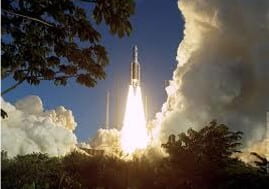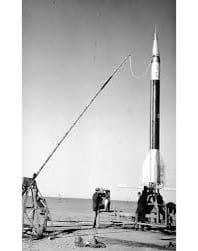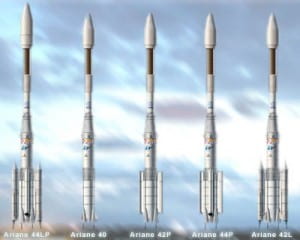 |
 |
 |
| 1. Eisenhower announces the program at the UN, December 1953 | 2. Véronique sounding rocket launch in Hammaguir, Algeria | 3. The Ariane-4 family |
1. John Krige, “A Victory for Clean Interfaces: Europe’s Participation in the Space Shuttle Program,” in Roger Launius, John Krige and Jim Craig, eds, The Legacy of the Space Shuttle: How We Did it, What we Learned (AIAA Publications, 2013), 265-282.
Describes how NASA’s offer that W. Europe conribute $1billion to hardware for the shuttle was contested by many who feared for significant technology transfer and eventually reduced to building a spacelab for science that snuggled in the cargo bay, rather than a part of the orbiter itself or a propulsion system called the space tug. For a pdf click here.
2. John Krige, “Technology, Foreign Policy, and International Cooperation in Space,” in Steven J. Dick and Roger D. Launius, eds, Critical Issues in the History of Spaceflight (Washington DC: NASA SP-2006-4702, 2006), pp. 239-260
Embeds NASA’s collaboration in space science and technology with Western Europe in the 60s and 70s squarely in the framework of American foreign policy in the region. For a pdf click here
3. John Krige, “Building Space Capability Through European Regional Collaboration,” in Steven J. Dick, ed, Remembering the Space Age. Proceedings of the 50th Anniversary Conference (Washington DC: NASA SP-2008-4803, 2008), pp. 37-53.
Makes a plea for the heterogeneity of space programs and the diversity of space policies as they evolve at the national, regional and global levels — as opposed to a reduction of the space age to US-Soviet rivalry. Describes the very different logic of the European collaborative space effort. For a pdf click here.
4. John Krige, “NASA as an Instrument of U.S. Foreign Policy,” in Steven J. Dick and Roger D. Launius, eds, Societal Impact of Spaceflight,” (Washington DC, NASA SP2007-4801, 2007), 207-218.
Suggests that NASA’s collaborative space science efforts in France, Germany (Helios) and ESA (Cassini-Huygens) can be understood as exercises of soft power. For a pdf click here